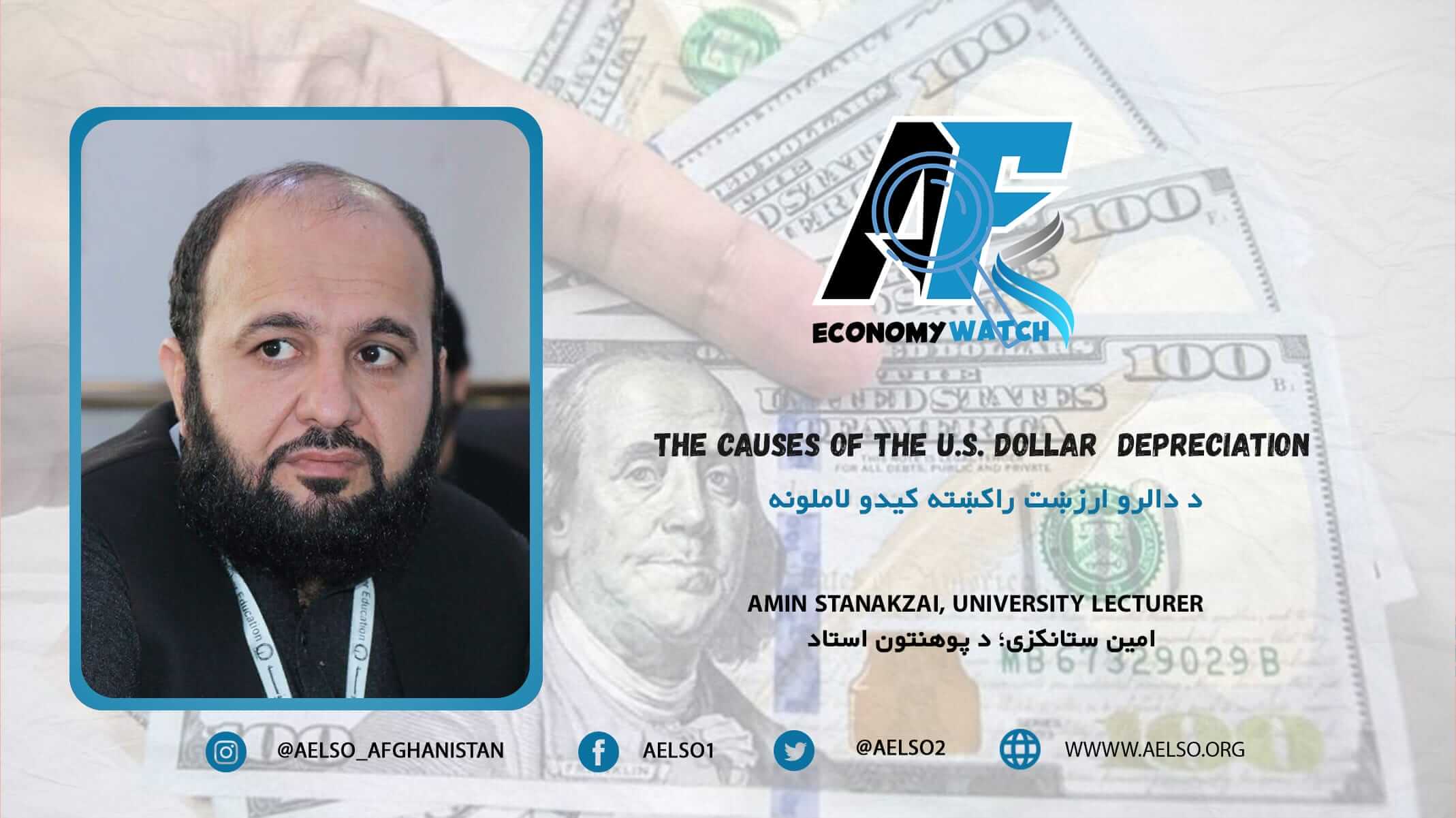
The Causes of the U.S. Dollar Depreciation
By: Amin Stanakzai, University Lecturer
Introduction
In the global economy, the value of currencies is consistently influenced by various factors and circumstances. The U.S. dollar, considered the world’s primary reserve currency, is no exception and is affected by international political, economic, and social developments. This article delves into the major global and domestic causes contributing to the decline in the value of the U.S. dollar, as well as how the rising value of the Afghan afghani is tied to national policies and global transformations.
Reasons Behind the Decline in the Value of the U.S. Dollar
- Economic Slowdown in the United States
A primary cause of the dollar’s depreciation is economic stagnation or recession in the U.S. When the U.S. economy experiences slowed growth or a recession, it negatively impacts the dollar’s value. In such situations, investors often seek stable and profitable opportunities elsewhere, reducing the demand for the dollar. Political stability also plays a critical role in this regard. Recent reports indicate that U.S. economic growth has slowed, with expectations of recovery by 2025. Furthermore, the economic growth of global powers like China, Europe, and Russia can also reduce the dollar’s value. - Lowering of Interest Rates
A reduction in interest rates can lead to currency depreciation. For instance, when the U.S. Federal Reserve lowers interest rates, it reduces the dollar’s value. Higher interest rates in other countries attract investors to shift their capital to those currencies for better returns. Interest rate reductions are often part of strategies to promote new investments and economic policies. - Efforts Toward De-dollarization
Recently, efforts to reduce reliance on the dollar in international trade have gained momentum, particularly by countries like China and Russia. The BRICS nations’ decision to reduce dollar-based transactions has also played a significant role. Such initiatives diminish the dollar’s global importance, consequently decreasing its value. Additionally, differences in monetary policies and interest rates between countries can also negatively affect the dollar. - Seasonal Declines in the Fourth Quarter
The dollar often experiences a slight decline during the last three to four months of the calendar year. One reason is that central banks implement policies to discourage cash hoarding, encouraging investments and business creation. Interest rates for various currencies also play a role in this context. Another factor is year-end budgetary spending, where a surge in monetary supply naturally reduces currency value. For example, in the final three months of 2023 (October, November, and December), the dollar’s value dropped to 65 Afghanis due to accelerated budgetary expenditures and increased dollar circulation in the market. - Political Instability
Political instability or uncertainty in the U.S. can also weaken the dollar. Events such as government crises, electoral disputes, or international conflicts erode investor confidence in the dollar. Factors like U.S. elections, the Middle East conflicts, the Ukraine war, and international sanctions contribute to such instability, pushing investors to move their capital outside the U.S. - Trade Deficits
A rising trade deficit in the U.S. is another contributor to the dollar’s depreciation. Since June 2023, the U.S. trade deficit has increased. When imports exceed exports, the demand for the dollar decreases, lowering its value. Without supportive measures, this trend could similarly affect the Afghan currency. - Diversion of U.S. Focus to Global Crises
The U.S.’s involvement in global conflicts, disputes, and wars diverts its attention from domestic economic issues, limiting its ability to focus on strengthening its economy. This lack of attention can contribute to the dollar’s depreciation. - Fear of Further Dollar Weakness
A general perception that the dollar may weaken further discourages investments in it. While Americans have expressed confidence in an economic recovery in the coming year, current uncertainties still impact the dollar’s value. - Government Restrictions on Foreign Exchange
If a government or central bank imposes restrictions on foreign exchange transactions, it can reduce access to dollars. For example, strict controls on dollar exchanges and prevention of dollar smuggling in Afghanistan have increased the demand for the afghani. - Increased Flow of Cash
A rise in the import of physical dollars or the inflow of international aid can temporarily decrease the dollar’s value by increasing its market supply. For instance, the disbursement of unspent budgets during the fourth quarter often leads to such effects.
It is advised that the general public avoid excessive engagement in currency exchange processes, as such activities could expose them to financial risks. Businesspeople and money traders are better equipped to navigate these fluctuations, while ordinary citizens may incur unnecessary losses. For those concerned about their dollar holdings, investing in tangible assets such as vehicles, gold, silver, real estate, or small businesses is a safer alternative.
Conclusion
The depreciation of the U.S. dollar is a natural and temporary process influenced by global political, economic, and financial factors. As highlighted in this analysis, factors such as U.S. economic stagnation, interest rate fluctuations, and international efforts toward de-dollarization have a direct impact on the dollar. Additionally, seasonal economic activities and investor responses also contribute to these fluctuations. It is crucial for individuals in Afghanistan to exercise caution and seek suitable investment opportunities to safeguard themselves from the potential risks associated with currency value changes.